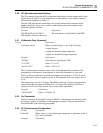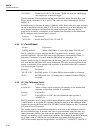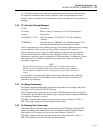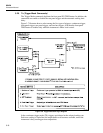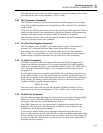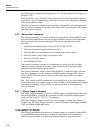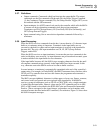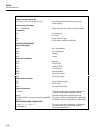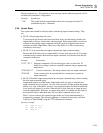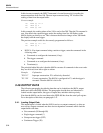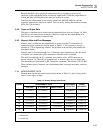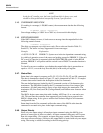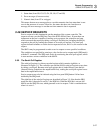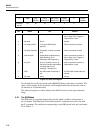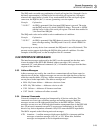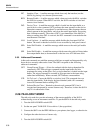
Remote Programming
INPUT SYNTAX
3
3-23
Illegal commands (e.g., F9) generate an error message, but are otherwise ignored, and do
not affect the instrument’s configuration.
Example Explanation
"* F9" This would load the output buffer with an error message and select F1
(established by the * command).
3-39. Syntax Rules
Four syntax rules should be followed when constructing input command strings. They
are:
• RULE 1: Read output data only once.
To prevent old (previously read) data from being read a second time by mistake, the
output buffer is always cleared after it has been read. If the output buffer is read twice
without an intervening output command, the 8842A will not respond to the second
attempt to read the output buffer. (However, if the 8842A is in T0, no intervening
command is necessary.)
• RULE 2: Use no more than one output command per input command string.
Because the 8842A has only one output buffer, it writes new data over old. If an input
command string contains more than one output command, only the data from the last
command can be read.
Example Explanation
"F1 T3 ? F2 ?" Improper construction. The second trigger writes over the first. To
obtain two readings, send two complete command strings (separated by
terminators).
"F2 R3 S0 T3 ?" Correct construction. The string contains only one output command.
"F2 R3 S0" Correct construction. It is permissible for a string not to contain an
output command.
• RULE 3: Read the output data generated by one input command string
before sending
the next input command string.
Output data remains available in the output buffer until it is read, or until the next
input command string is received. As soon as the controller finishes reading the output
buffer, or as soon as the 8842A receives a new input terminator, the Data Available bit
in the serial poll register is set false. When this bit is false, data can no longer be read
from the output buffer. Therefore, an output string which is available must be read by
the controller before, rather than after, the next input command string is sent.
Rule 3 is most evident in the external trigger mode, and is best demonstrated by a
programming example. The following program is written first incorrectly, and then
correctly, in Fluke BASIC using the 1722A Instrument Controller.
Incorrect example
100 PRINT @3, "T1 ?"
200 PRINT @3, "F4"
300 INPUT @3, A



